Whitby & the North Yorkshire Moors
December 13, 2010
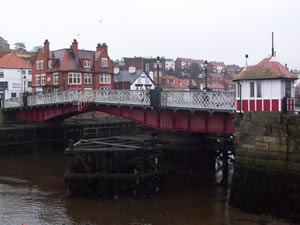 The weather during our day in the North Yorkshire Moors was horrid – rainy, gloomy, and so foggy that we could barely see thirty feet in front of us. Not exactly ideal for taking in the beauty of the countryside, particularly since we couldn’t even see it. However, our harrowing drive through the hilly and remote moors did give me a sense of how eerie and dangerous such a location could be for someone walking off the beaten path. It was no wonder that people became lost so easily and wandered into bogs in the fast-falling mists. If we had ventured past the road in front of us, the moors would have been a very scary place. The weather during our day in the North Yorkshire Moors was horrid – rainy, gloomy, and so foggy that we could barely see thirty feet in front of us. Not exactly ideal for taking in the beauty of the countryside, particularly since we couldn’t even see it. However, our harrowing drive through the hilly and remote moors did give me a sense of how eerie and dangerous such a location could be for someone walking off the beaten path. It was no wonder that people became lost so easily and wandered into bogs in the fast-falling mists. If we had ventured past the road in front of us, the moors would have been a very scary place.
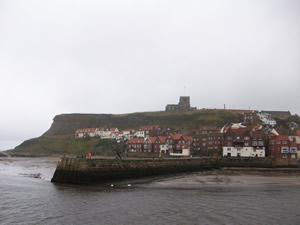
Because of the weather, we were forced to abandon much of our intended plans for the day, through we did make it to the village of Whitby, located on the eastern shore of England. “Visually dramatic, the buzzing fishing port and resort of Whitby, clings to the hills on the banks of the River Esk, its hilltop abbey ruins dramatically silhouetted against the sky. Other architectural highlights includes fine Georgian houses and humbler white fishermen’s cottages, linked by ginnels (alleys).” Whitby Abbey, sitting high on a cliff overlooking the village, was founded by St Hilda in AD 655, but was sacked by Vikings in 870. Benedictine monks rebuilt the abbey in the 11th century, but the ruins standing their today are mostly from the 13th century. These buildings were destroyed by Henry VIII and damaged further by German battleships in 1914. On the path side of the abbey’s clifftop graveyard is the cross of Caedmon, an illiterate laborer who worked at the abbey in the 7th century. He had a vision that inspired him to compose cantos of Anglo-Saxon religious verse still sung today. Sharing the windswept hillside is St Mary’s Church and its graveyard, reached by 199 steps. The two edifices provided a dramatic setting in Bram Stoker’s Gothic vampire novel Dracula (1897).
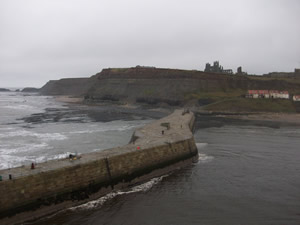 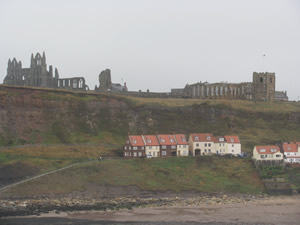
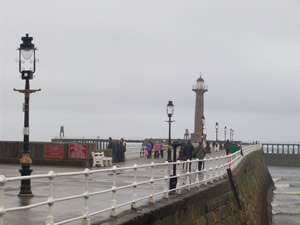 In the 18th and early 19th centuries it became on industrial port and shipbuilding town, as well as whaling center. In the Victorian era, the red-roofed cottages at the foot of the east cliff were filled with workshops crafting jet into jewelry and ornaments. Queen Victoria set a fashion for the lustrous black jet jewelry during her mourning for her husband, Prince Albert. Today, the tourist shops that have replaced them sell antique-crafted examples of the distinctive black gem. In the 18th and early 19th centuries it became on industrial port and shipbuilding town, as well as whaling center. In the Victorian era, the red-roofed cottages at the foot of the east cliff were filled with workshops crafting jet into jewelry and ornaments. Queen Victoria set a fashion for the lustrous black jet jewelry during her mourning for her husband, Prince Albert. Today, the tourist shops that have replaced them sell antique-crafted examples of the distinctive black gem.
A pleasant place for a stroll, the harbor is overlooked by an imposing bronze clifftop statue of the explorer Captain James Cook. The young James Cook slept in the attic of this 17th century harborside house when he was apprenticed to a Whitby shipping firm nearby.
We strolled the harbor and trolled the shops for jet, before setting out across the moors through the murky mist for York.
|